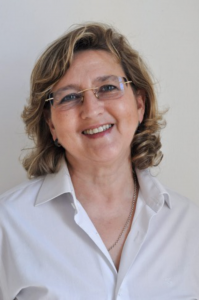co-PI: Macarena Gómez Mármol
Abstract:
In this project we address the use of Reduced Order Modeling (ROM) to optimize the energy consumption of buildings. Buildings are responsible for 40% of energy consumption in the EU. One of the main bottlenecks to perform the energy analysis is the need to use simplified models of the heat flows to guarantee affordable computing times. This is mainly due to the difficulty of modelling the air-walls heat flow, as turbulence effects take place, thus requiring unaffordable computing times for real-time design. With this purpose, the main objective of the project are
– Elaboration and numerical analysis of reduced order models for PDEs of incompressible fluid mechanics. The purpose is to tackle this problem in a broad perspective, using the different reduced modeling techniques and the experience already acquired by the team.
– Energy optimization of transitional spaces in buildings through reduced-order modeling and topological data analysis. It is about optimizing the shape of the transitional spaces to guarantee a minimum energy consumption in the cooling of buildings to keep the temperature within comfort levels. Buildings with courtyards can provide more indoor comfort and energy efficiency in warm climates as compared to other building types. This could considerably improve the energy efficiency and indoor summer thermal comfort of residential buildings but needs to be appraised.
– To determine energy efficiency and comfort potential of courtyards facing the global warming required adaptation. A warmer climate demands new passive design solutions. Courtyards are a traditional and optimal solution for Spanish climate but need to be evaluated considering thermal comfort hours in free running mode.
With increased global concerns on climate change, the need for innovative spaces which can provide thermal comfort and energy efficiency is also increasing. The main focus will be to verify the architectural transitional spaces potential tempering degree according to different climate change scenarios and the resulted comfort implications. Both outside thermal variables and construction characteristics, including shading elements, will be considered.
Source of Funding: Spanish Research Agency
Implied entities: University of Sevilla, University CEU Cardenal Herrera
Partners: University of Bordeaux, Virginia Tech (USA), MIT (USA), IRIS-ENSEEIHT, Toulouse.
iMAT research line: ⊕ RL1: Modeling of Energy Systems ⊕ RL7: Numerical Analysis
Researchers:
Alejandro Bandera Moreno
Tomás Chacón Rebollo
Daniel Franco Coronil
Soledad Fernández García
Macarena Gómez Mármol
Carlos Núñez Fernández
Samuele Rubino
Isabel Mª Sánchez Muñoz


 PI:
PI: 